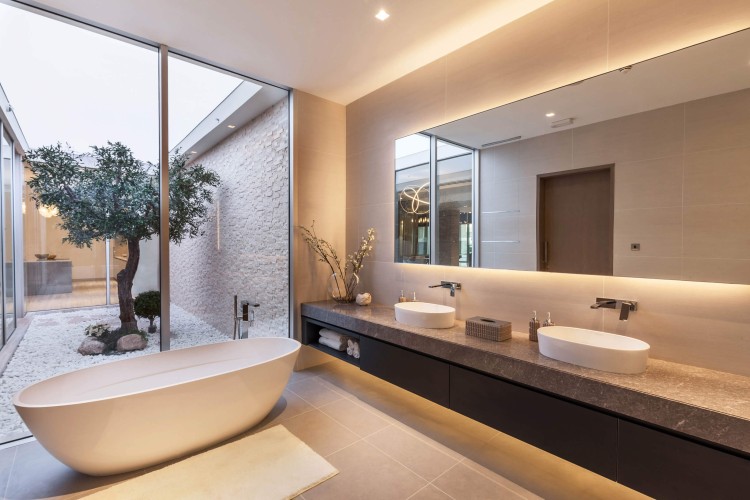What are examples of artificial trees?

Artificial trees have become a popular choice for both indoor and outdoor decor. They offer a maintenance-free alternative to live trees, providing year-round beauty without the need for watering, pruning, or pest control.
Whether you're looking to enhance your home, office, or commercial space, there are various species of artificial trees to choose from.
In this article, we will explore some of the most commonly purchased types of luxury artificial trees, why people choose them, what to look for when buying one, and how to make them look as natural as possible.
What is the most commonly purchased species of artificial tree?
When it comes to artificial trees, some species stand out due to their popularity and realistic appearance. One of the most commonly purchased types is the Ficus tree.
Ficus artificial trees are favoured for their dense foliage and natural look, making them a perfect addition to any interior space.
Another popular choice is the Palm tree, particularly the Areca Palm, which brings a tropical vibe to homes and offices.
For those who prefer a more dramatic look, artificial Olive trees are a top choice.
Their slender branches and silver-green leaves add a touch of Mediterranean elegance.
Additionally, artificial Bamboo trees are highly sought after for their minimalist and modern appeal, fitting well in contemporary settings.
Why do people buy artificial trees?
There are several reasons why people opt for luxury artificial trees over real ones. One primary reason is convenience.
Artificial trees do not require watering, pruning, or special lighting conditions, making them ideal for busy individuals or those without a green thumb.
They are also hypoallergenic, which is beneficial for people with allergies to pollen or plant sap.
Another significant advantage is durability. High-quality artificial trees can withstand various weather conditions, making them suitable for both indoor and outdoor use.
For instance, the best artificial trees outdoors are UV-protected to prevent fading and are made from materials that can endure wind and rain.
Moreover, artificial trees offer aesthetic flexibility. They come in a wide range of styles, sizes, and colours, allowing for customization to match any decor.
Seasonal changes do not affect their appearance, ensuring that they remain beautiful year-round.
What to look for when buying an artificial tree
When purchasing an artificial tree, several factors should be considered to ensure you get the best value for your money. First, look at the material used.
High-quality artificial trees are typically made from silk, polyester, or plastic. Silk trees offer a more realistic appearance, while polyester and plastic are durable and suitable for outdoor use.
Another critical factor is the craftsmanship. Pay attention to the details, such as the texture of the leaves and the construction of the trunk.
The best artificial trees for indoors often feature hand-painted trunks and leaves with varying shades of green to mimic the natural variations found in live trees.
Size is also an important consideration. Measure the space where you intend to place the tree to ensure it fits well without overwhelming the area.
Additionally, check if the tree is easy to assemble and if it comes with a stable base to prevent tipping over.
How do you make an artificial tree look natural?
Making an artificial tree look natural requires a few strategic touches. Start by carefully fluffing the branches and leaves. Spread them out to avoid any artificial clumping and to create a more organic appearance.
Next, consider the placement of the tree. For instance, artificial outdoor trees for the front door can be placed in decorative planters to enhance their realism. Adding real soil or moss at the base of the tree can also create a more natural look.
Lighting can also play a significant role. Use natural light to highlight the tree's features, and if placing it indoors, consider positioning it near a window.
You can also add string lights or decorative elements to blend the tree with its surroundings seamlessly.
Final thoughts
Artificial trees offer a practical and aesthetically pleasing solution for those looking to add greenery to their spaces without the upkeep required by live plants.
Whether you're seeking a realistic indoor Ficus or a durable outdoor Palm, there are numerous options available to suit your needs.
When selecting an artificial tree, consider the material, craftsmanship, and size to ensure you find the perfect match for your decor.
With a few simple adjustments, you can make any artificial tree look remarkably natural.
For more information on enhancing your space with luxury artificial trees, contact our experts and we'll be happy to provide you with a quote based on your needs.





